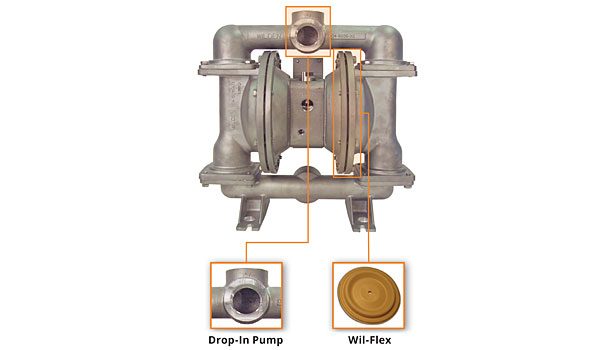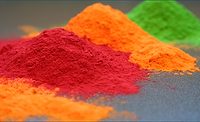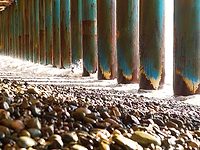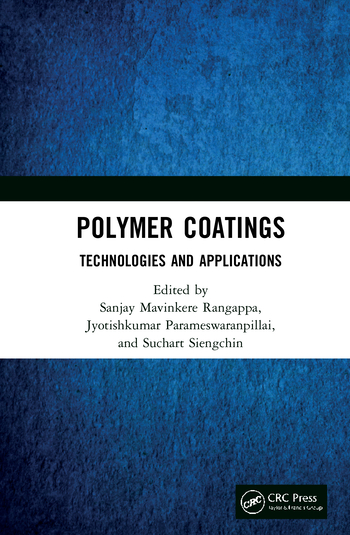Advancing Pump Technologies in Coatings
AODD enhancements help operators improve performance, product containment and energy efficiency








Though the global recession, which hit the new-housing market exceptionally hard, saw the coatings market stagnate in 2007 and 2008, the first signs of an economic rebound saw coatings revenues grow by 2.1% in 2009 to reach a worldwide value of $110.5 billion. With future growth, the industry’s worldwide value is expected to be $128.6 billion by 2014. Opportunities abound for coatings manufacturers both at home and abroad.
While this anticipated growth creates opportunities for manufacturers to increase production, the current realities of the manufacturing climate dictate that their production processes be as efficient and environmentally friendly as possible. With pumps playing a key role in all aspects of coatings manufacture, increasing operational efficiency through the utilization of pumps featuring advanced technology should be front-of-mind for the manufacturing facility operator.
This article examines current challenges that must be overcome in maximizing production manufacturing processes and recent technological advancements in air-operated double-diaphragm (AODD) pump technology that can help manufacturers control costs, reduce product loss, save energy, optimize uptime performance and meet environmental regulations.
The Challenge
Today, a wide variety of pigments, additives and polymers (binders) are used to mass-produce uniform batches of paint. New, environmentally friendly, low-solvent and solventless formulations reduce VOC emissions, making the production and application of coatings safer. While pigments for paints were ground in stone mills 100 years ago, today sand mills and high-speed dispersion mixers are used to grind easily dispersible pigments.
Because of these significant changes to the raw materials used in coatings production, the manufacturing processes have become a more refined science. To ensure the highest quality standards, coatings manufacturers must utilize robust equipment that offers the highest degree of flexibility and performance in terms of reliability, product-loss prevention, environmental protection and energy efficiency, while retaining the versatility necessary to handle a wide variety of coatings components, all of which have their own unique handling characteristics.
Coatings manufacturers generally fall into one of two camps: waterborne or solventborne producers. Both of these producers may use the same binders, pigments and additives in their products, but there is a major difference in the way they are constructed and perform: waterborne paints are typically water-based emulsions, while solventborne paints are most often oil and/or alkyd-based formulations.
Whether waterborne or solventborne, the paints contain four basic components: pigments; binders (combine the paint’s constituents into a solution that cures into a film after application); liquids/solvents (a medium that allows the pigment and binder to be applied to the painted surface); and additives (provide specific paint properties, such as thickening, mildew/bacteria resistance, defoaming, etc.).
This mélange of styles and components that are found in current-day coatings means that the producer must utilize manufacturing technology that is versatile enough to handle an array of raw materials in a way that maximizes production schedules, energy efficiency and product containment, all while meeting strict environmental regulations that govern the release of VOCs and hazardous air pollutants (HAPs) to the atmosphere during paint production and application.
The Solution
Invented in 1955 by Jim Wilden as the solution for demanding utilitarian pumping applications that require a robust design, positive displacement AODD pump technology has grown to become the top choice for liquid-handling and transfer in a wide variety of industries, including coatings manufacture. AODD pumps are able to satisfy the demands of the industry because their design allows the product flow to stay constant with the speed of the pump, which is a major consideration in coatings production. Other benefits of AODD technology include its ability to be used in a wide range of pressure and flow specifications; self-priming and low-wear operation; ability to handle corrosive and abrasive solutions; improved energy efficiency; and overall low maintenance costs.
In some large coatings manufacturing facilities, upwards of 200 to 300 air-powered pumps may be in operation at any one time. Thanks to recent technological advancements that Wilden Pump & Engineering LLC has made to its Advanced™ Series Metal AODD Pumps, these pumps are now designed to offer the best performance in coatings manufacture, optimizing production, energy savings and product containment.
Operators of coatings manufacturing facilities are all about speed. They incorporate batch-type operations where the product being manufactured is mixed, then sent to a fill tank and fill line. They also have raw ingredients that are moved off of truck tankers or railcars, transferred to a storage tank, diverted to a mix tank based on the recipe required, moved to a day tank or fill tank, then finally transferred to a filling line. Because of this style of fluid-handling, AODD pump technology is used in every step of this process. They are ideal for these coatings manufacturing applications because:
• Most applications require less than 125 psi;
• Shear-sensitive fluids that can’t be agitated are always in use;
• Thick, viscous fluids are also constantly in motion;
• Leak-free operation is paramount; and
• Dead-heading occurs during filling operations, a task that motor-driven pumps are not able to handle effectively.
With these considerations in mind, Wilden offers a complete size range of Advanced Series Bolted AODD pumps. In addition, Wilden now offers bolted “drop-in” configurations in the following sizes:
• 1-inch (25 mm) stainless steel and aluminum;
• 1.5-inch (38 mm) stainless steel;
• 2-inch (51 mm) stainless steel;
• 3-inch (76 mm) stainless steel.
In addition, these pumps now come outfitted with new technologies that make them even more perfectly suited for coatings manufacture. These new features include:
Pro-Flo X™ Air-Distribution System (ADS) –Provides operational flexibility through its patented Efficiency Management System (EMS™) that allows the user to optimize the ADS for any application demands regardless of pump size by using a control dial to select the flow rate that best suits the application.
Bolted Configuration – Gives the pump better leak-containment and sealing properties at higher pressures when compared to traditional clamped configurations.
Full-Stroke PTFE Diaphragms – The full-stroke design of these diaphragms results in increased product displacement per stroke, which translates into greater flow rates and higher efficiencies when compared with AODD pump brands that rely on reduced-stroke PTFE diaphragms.
Drop-in Pump Configuration – Allows a pump to be installed in an existing footprint without the need to disturb the piping. These drop-in pumps have a larger flow path, resulting in increased flow rates and decreased energy consumption when compared with competing AODD pump technology.
Easy Install Wil-Flex™ Diaphragms –Made of Santoprene®, these diaphragms are easy to install and are an excellent low-cost alternative to PTFE diaphragms when used in coatings applications that involve the handling of abrasives. Wilden has recently upgraded its Wil-Flex Diaphragms, introducing a flat-profile design that eliminates the need to invert the diaphragm when rebuilding a pump, which allows for easy, cost-effective installation. Additionally, this design enhancement increases the diaphragm’s flex life.
The performance-enhancing operation of the upgraded Wilden Advanced Series pumps also equates into energy savings for the facility operator, as lower amounts of compressed air are needed to maintain desired flow rates and pressures (see Sidebar). All of these features combine to make Wilden’s Advanced Series Metal AODD Pumps the ultimate answer for all liquid-handling applications in coatings manufacturing operations.
Conclusion
Manufacturers in every industry can no longer be solely concerned with meeting production quotas. As utility costs continue to rise, they must also take measures to guarantee that their operations run in the most efficient manner possible. Then, when all those operational parameters are met, they must also ensure that their production processes meet the tenets of increasingly strict environmental regulations.
These unique, and growing, challenges are why many manufacturers, especially those in the coatings industry, are turning to pumping technologies that not only ensure production quotas are met, but that they are done so in the most cost-effective and environmentally sensitive manner possible. Wilden has recognized these challenges and has taken innovative steps to meet these demands through the technological enhancements it has developed for its AODD pumps, specifically the Advanced Series Metal AODD lines. These pumps are now designed to offer the best performance in coatings manufacture, performance that will optimize production, energy savings, product containment and environmental consciousness in one of the most important industries on the globe. n
For more information on Wilden, visit www.wildenpump.com.
Sidebar:
| Rating AODD Performance |
|
When highlighting the performance capabilities of their products, manufacturers of AODD pumps often focus most specifically on what is called the pump’s “performance ratio.” This ratio is the number of gallons of product that are pumped per standard cubic foot per minute (scfm) of compressed air that is consumed. Since using compressed air is expensive, facility operators and engineers want this ratio to be as high as possible, which signifies that the pump is working at its efficient best. To optimize the performance ratio of its pumps, Wilden Pump & Engineering LLC has developed the Pro-Flo X™ Air Distribution System (ADS). The Pro-Flo X ADS features a patented Efficiency Management System (EMS) that allows the user, through the use of a control dial, to set the pump’s optimal flow rate for any application. For instance, turning the control to setting “4” on the Pro-Flo X ADS might achieve a pump output of 103 gallons per minute (gpm), but might take 77 scfm to achieve. That’s a performance ratio of 1.34 gallons pumped per 1 scfm consumed. However, if the user sets the Pro-Flo X ADS control dial to “2,” the pump’s output might be 64 gpm, but it will need only 37 scfm to achieve it, which is a performance ratio of 1.73 gallons pumped per 1 scfm consumed. This is a 22% increase in efficiency that not only reduces the amount of air that is consumed, but is also a reduction in wear on the pump components, which can double part life and reduce by 50% downtime, maintenance, labor and part costs. Or, consider this: A test was conducted involving a 2-inch AODD pump that did not have an EMS incorporated into its ADS versus one that did. The test was conducted using water as the media. The non-EMS pump was run at a 100 psig air inlet against a discharge pressure of 20 psig. At these conditions, the non-EMS pump used 130 scfm of compressed air to achieve a flow rate of 116 gpm. When the same test was conducted using an AODD pump with an EMS ADS, the same flow rate of 116 gpm was achieved while “dialing back” the air usage so that the pump was not running at maximum capacity. In this test, the AODD pump with an EMS ADS reduced the air consumption by 42% (or 54 scfm) at the desired flow rate of 116 gpm. So, while AODD pumps will always play a key role in the manufacture of coatings, only those that feature an ADS with an EMS option will allow the facility operator to reduce the consumption of costly compressed air while still achieving the flow and transfer rates that allow the plant to meet its production quotas. For more information on optimizing AODD pump performance, visit www.wildenpump.com/seemoregreen. |
Looking for a reprint of this article?
From high-res PDFs to custom plaques, order your copy today!












